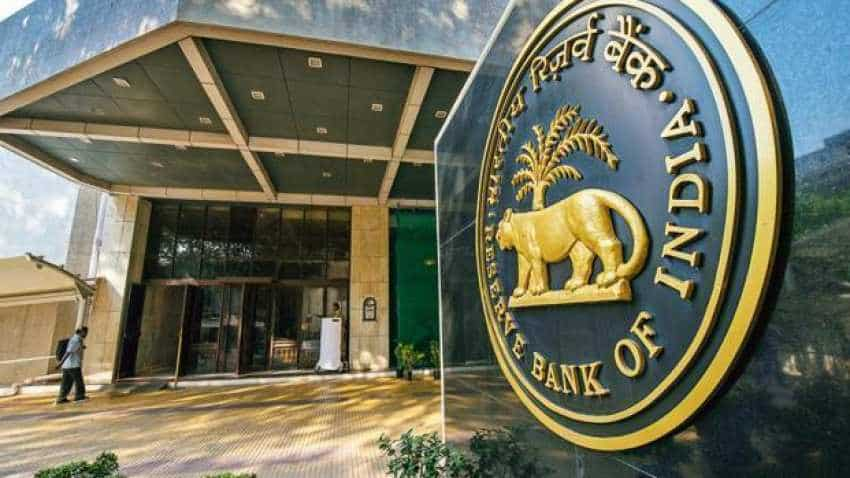RBI draft liquidity norms may put pressure on NBFCs margins: Analysts
Draft liquidity norms for the non-banking financial companies (NBFCs) announced by the Reserve Bank will put pressure on their margins and returns over the medium term.

The draft liquidity norms for the non-banking financial companies (NBFCs) announced by the Reserve Bank will put pressure on their margins and returns over the medium term, analysts say. The proposed norms may also result into consolidation in the NBFC sector, they said. Last week, the RBI released a draft circular on Liquidity Risk Management Framework for NBFCs with an asset size of Rs 100 crore.
The norms will also be applicable for all Core Investment Companies (CICs) registered with the Reserve Bank. The draft norms said all non-deposit taking NBFCs with asset size of Rs 5,000 crore and above, and all deposit taking NBFCs irrespective of their asset size, shall maintain a liquidity buffer in terms of a liquidity coverage ratio (LCR) which will promote resilience of NBFCs to potential liquidity disruptions by ensuring that they have sufficient High Quality Liquid Asset (HQLA) to survive any acute liquidity stress scenario lasting for 30 days.
"NBFCs would have to carry low yielding assets to meet the HQLA requirement going forward, which could exert pressure on their net margins, rating agency Icra said in a report.
In a note, financial services company Jefferies India said LCR norms would affect margins and returns in the medium term, especially for housing finance companies (HFCs), given higher asset liability management (ALM) mismatch.
Tighter liquidity norms should induce stronger ALM discipline among NBFCs, it said.
The LCR norms will be implemented in a calibrated manner over a period of four years starting from April 2020 and going upto April 2024.
The LCR requirement shall be binding on NBFCs from April 1, 2020 with the minimum HQLAs to be held being 60 per cent of the LCR, progressively increasing to the required level of 100 per cent by April 01, 2024.
Icra further said most large and better managed NBFCs have upped their on-book liquidity post September 2018 and carry adequate sanctioned credit/funding lines, with which they could meet the 100 per cent LCR requirement, even after stressing the outflows by 115 per cent and inflows by 75 per cent.
"Well managed NBFCs typically maintain 1-2 months debt repayments and in some case even expected disbursements, in the form of sanctioned undrawn lines, which would support their LCR ratio," the rating agency said.
According to law firm Cyril Amarchand Mangaldas Partner, Leena Chacko, the new norms would lead to consolidation in the NBFC sector.
"There is likely to be consolidation because NBFCs with higher liabilities and lesser liquid assets will have to consolidate in order to meet the regulatory requirement," Chacko said.
It should help improve the creditworthiness of the NBFCs and ensure that they are able to meet their liabilities, she said.
Aadhar Housing Finance Managing Director and Chief Executive, Deo Shankar Tripathi, said implementation of LCR and maintaining HQLA are very important and timely steps for sound and healthy growth of NBFCs.
"However, maintaining HQLA will be some drag on the margin and growth which is already under pressure due to increase in cost of borrowing and tightness in liquidity post September 18," Tripathi said.
He said lower rated NBFCs will find it difficult to raise resources under the proposed tight liquidity and ALM management norms, which are very good for stability of the sector.
"This might lead to consolidation in highly crowded NBFC space," he said.
11:11 PM IST






 WhatsApp Update! Mark Zuckerberg says WhatsApp Pay in India soon
WhatsApp Update! Mark Zuckerberg says WhatsApp Pay in India soon RBI Monetary Policy October 2019: KEY TAKEAWAYS from fourth bi-monthly statement
RBI Monetary Policy October 2019: KEY TAKEAWAYS from fourth bi-monthly statement RBI policy announcement: Zee Business poll favours 0.25% rate cut
RBI policy announcement: Zee Business poll favours 0.25% rate cut  Viral message: RBI cancelling leaves of its officers. It's Fake!
Viral message: RBI cancelling leaves of its officers. It's Fake!  Benchmarking India's Payment Systems: India has 597 ATMs less in 2019 than 2017, says RBI report - Check key details
Benchmarking India's Payment Systems: India has 597 ATMs less in 2019 than 2017, says RBI report - Check key details